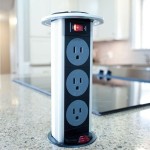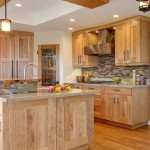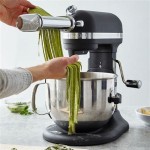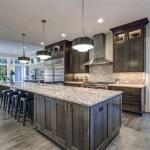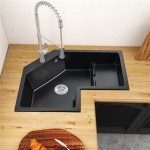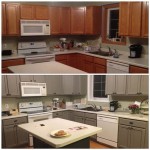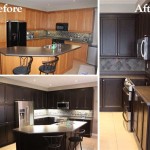Kitchen Islands for Small Apartments: Maximizing Space and Functionality
The modern apartment dweller often faces the challenge of limited space, particularly in the kitchen. A kitchen island, traditionally associated with larger homes, might seem an impractical addition to a small apartment. However, with careful planning and consideration of available options, a kitchen island can become a valuable asset, enhancing both functionality and aesthetic appeal in a compact living space. This article explores the diverse range of kitchen island solutions appropriate for small apartments, focusing on maximizing space and optimizing utility.
The primary benefit of incorporating a kitchen island, even in a smaller footprint, lies in its ability to expand counter space. In apartments where countertops are often insufficient for food preparation, a kitchen island provides much-needed surface area for chopping, mixing, and assembling meals. Furthermore, the island can serve as a buffet station during gatherings, relieving pressure on the dining table and other countertops.
Beyond expanded counter space, many kitchen island designs incorporate storage solutions. Cabinets, drawers, and open shelving can be integrated into the island's structure, providing additional space for storing cookware, utensils, pantry items, and even small appliances. This is particularly useful in apartments where kitchen storage is often limited.
The incorporation of a kitchen island can also redefine the layout and flow of a small apartment kitchen. It can act as a visual divider between the cooking area and the living or dining space, creating a more defined separation of functions. This can be especially beneficial in open-plan apartment layouts where the kitchen blends seamlessly with other living areas.
Before selecting a kitchen island for a small apartment, several factors must be carefully considered. Available space is the most crucial determinant. Accurate measurements of the kitchen area are essential to ensure that the island fits comfortably without obstructing movement or creating a cramped environment. The island should allow for ample clearance around it, typically at least 36 inches, to ensure easy passage.
The functionality required from the kitchen island is another significant consideration. Will it primarily serve as a food preparation area, a serving surface, or a storage unit? The intended use will dictate the features and design elements that are most important. For example, if the island will be used for food preparation, a durable countertop material that is easy to clean and resistant to scratches and stains is essential.
The aesthetic appeal of the kitchen island should also complement the overall style of the apartment. The island should seamlessly integrate with the existing kitchen cabinetry and décor, enhancing the visual appeal of the space rather than appearing out of place. The color, material, and design of the island should be chosen with careful consideration of the existing color scheme and architectural style.
Key Point 1: Space-Saving Island Designs
Several types of kitchen islands are particularly well-suited for small apartments due to their space-saving design features. Rolling kitchen islands, for instance, offer maximum flexibility. These islands are equipped with casters, allowing them to be easily moved around the kitchen as needed and stored away when not in use. This is particularly useful in apartments where space is at a premium. A rolling island can be positioned in the center of the kitchen during food preparation and then moved against a wall or into a corner when not needed, freeing up valuable floor space.
Another space-saving design is the foldable kitchen island. These islands feature sections that can be folded down or extended as needed, allowing for adjustable counter space. When folded down, the island occupies a minimal footprint, making it ideal for smaller apartments. When more counter space is required, the sections can be easily unfolded to provide a larger work surface. Some foldable islands also incorporate storage features, such as drawers or shelves, further maximizing their utility.
A small, stationary island can also work in a small space if efficiently designed. A narrow island placed lengthwise can add counter space without significantly disrupting the flow of the kitchen. Choosing an island with open shelving provides storage and keeps the visual space open, preventing the kitchen from feeling cramped. The height of the island should also be considered in relation to the existing countertops to ensure ergonomic comfort during food preparation.
When selecting a space-saving kitchen island, it’s important to prioritize designs that maximize functionality without compromising on space. Consider islands with built-in storage solutions, such as drawers, shelves, or even wine racks, to make the most of the available space. The material and finish of the island should also be chosen carefully to complement the existing kitchen décor and create a cohesive look.
Key Point 2: Multifunctional Island Features
To maximize the value of a kitchen island in a small apartment, it is essential to choose designs that incorporate multifunctional features. A kitchen island can serve multiple purposes, such as a cooking station, a dining area, and a storage unit. This versatility makes it a valuable addition to any small apartment kitchen.
One common multifunctional feature is the incorporation of a breakfast bar. By adding an overhang to one side of the island, it can be used as a seating area for quick meals or casual dining. This eliminates the need for a separate dining table in smaller apartments, freeing up valuable space. Bar stools or chairs can be tucked under the overhang when not in use, further minimizing the island's footprint.
Another useful multifunctional feature is the integration of a sink or cooktop into the island's countertop. This transforms the island into a fully functional cooking station, allowing for more efficient food preparation. A sink can be particularly useful for washing vegetables or cleaning dishes, while a cooktop can provide additional cooking surface area. When incorporating a sink or cooktop, it is important to ensure that the necessary plumbing and electrical connections are properly installed.
Integrated storage solutions are also essential for maximizing the functionality of a kitchen island. Drawers can be used to store utensils, cutlery, and small appliances, while shelves can be used to store cookware, pantry items, or even cookbooks. Some islands also incorporate specialized storage features, such as knife blocks, spice racks, or wine racks, to further enhance their utility.
When selecting a multifunctional kitchen island, it is important to consider the specific needs and requirements of the apartment dweller. The island should be designed to meet the cooking, dining, and storage needs of the individual, maximizing its value and utility in the limited space.
Key Point 3: Material Selection and Style Considerations
The materials used in the construction of a kitchen island can significantly impact its durability, aesthetic appeal, and overall functionality. When selecting materials for a kitchen island in a small apartment, it is important to consider factors such as durability, ease of maintenance, and compatibility with the existing kitchen décor. The chosen style should also complement the apartment's overall aesthetic.
For countertops, durable and easy-to-clean materials such as quartz, granite, or solid surface are popular choices. Quartz is a manufactured stone that is highly resistant to scratches, stains, and heat, making it an ideal choice for food preparation areas. Granite is a natural stone that offers a unique and elegant look, but it requires regular sealing to prevent stains. Solid surface materials are non-porous and easy to clean, making them a practical choice for busy apartment dwellers.
For the island's cabinetry, wood is a classic and versatile choice. Wood cabinets can be painted or stained to match the existing kitchen décor, and they offer a warm and inviting look. However, wood cabinets require regular maintenance to prevent moisture damage and warping. MDF (medium-density fiberboard) is a more affordable alternative to solid wood, and it is also resistant to moisture. MDF cabinets can be painted or finished to resemble wood, offering a similar aesthetic at a lower cost.
The style of the kitchen island should also be carefully considered to complement the overall aesthetic of the apartment. For modern apartments, sleek and minimalist designs with clean lines and simple hardware are often preferred. For traditional apartments, more ornate designs with carved details and decorative hardware may be more appropriate. The color of the island should also be chosen carefully to complement the existing color scheme of the kitchen.
Lighting is another important consideration when selecting a kitchen island. Pendant lights can be hung above the island to provide task lighting for food preparation or to create a more ambient atmosphere for dining. Recessed lighting can also be used to illuminate the island's countertop and create a more even distribution of light throughout the kitchen. The style of the lighting fixtures should complement the overall style of the kitchen island and the apartment.
In conclusion, incorporating a kitchen island into a small apartment requires careful planning and consideration of available space, functional needs, and aesthetic preferences. By selecting space-saving designs, prioritizing multifunctional features, and choosing appropriate materials and styles, apartment dwellers can create a kitchen island that enhances both the functionality and the visual appeal of their living space. The result is a more efficient, organized, and enjoyable kitchen environment, even within the constraints of a small apartment.
:max_bytes(150000):strip_icc()/SF_SIMART_FEV2020-9230_BD-9aa984d60b2740db99eeb8966e917faa.jpeg?strip=all)
33 Small Kitchen Island Ideas To Optimize A Compact Space

35 Small Kitchen Island Ideas To Maximize Space
:max_bytes(150000):strip_icc()/MichelleGersonUESKitchenPhotographerMarcoRicca-2aebd23874364a59a658be9588388a67.jpeg?strip=all)
33 Small Kitchen Island Ideas To Optimize A Compact Space

61 Small Kitchen Ideas That Make The Most Of A Tiny Space

30 Small Kitchen Island Ideas That Blend Style And Function

Kitchen Island Ideas With Seating To Maximise Space In Small Kitchens Diy Home Decor Your Family

24 Tiny Island Ideas For The Smart Modern Kitchen Decoist

16 Alternative Kitchen Island Ideas Kitchens Without Islands

90 Modern Kitchen Island Ideas To Transform Your Home In 2025

30 Small Kitchen Island Ideas That Blend Style And Function
See Also

